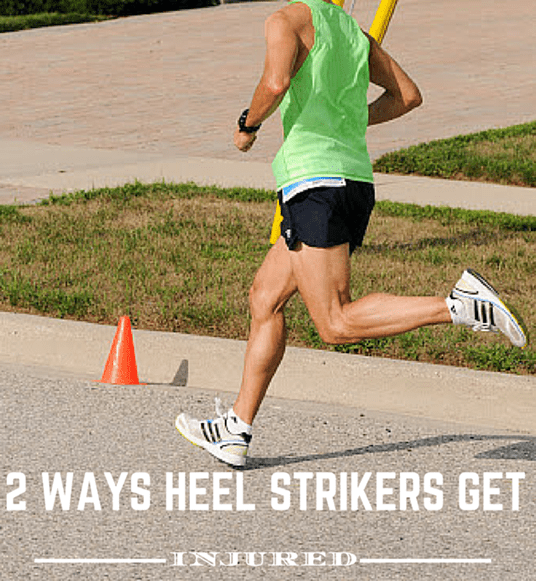Unlike forefoot running, heel strike running will almost surely get you chronically injured as the most convincing evidence to date (references below article) reveals 2 major reasons heel strike runners get injured by a significantly larger multiple:
1. The body/ground collision force at heel strike.
2. The running shoes heel strike runners wear.
The Body/Ground Collision Force
Most injuries in running are impact-related, and the impacts that rise to pain-and-injury predisposing levels only occur in heel strike running whereby the highest point of impact in heel strike running occurs at touchdown. This kind of impact is known as a burst in high collisional impact:
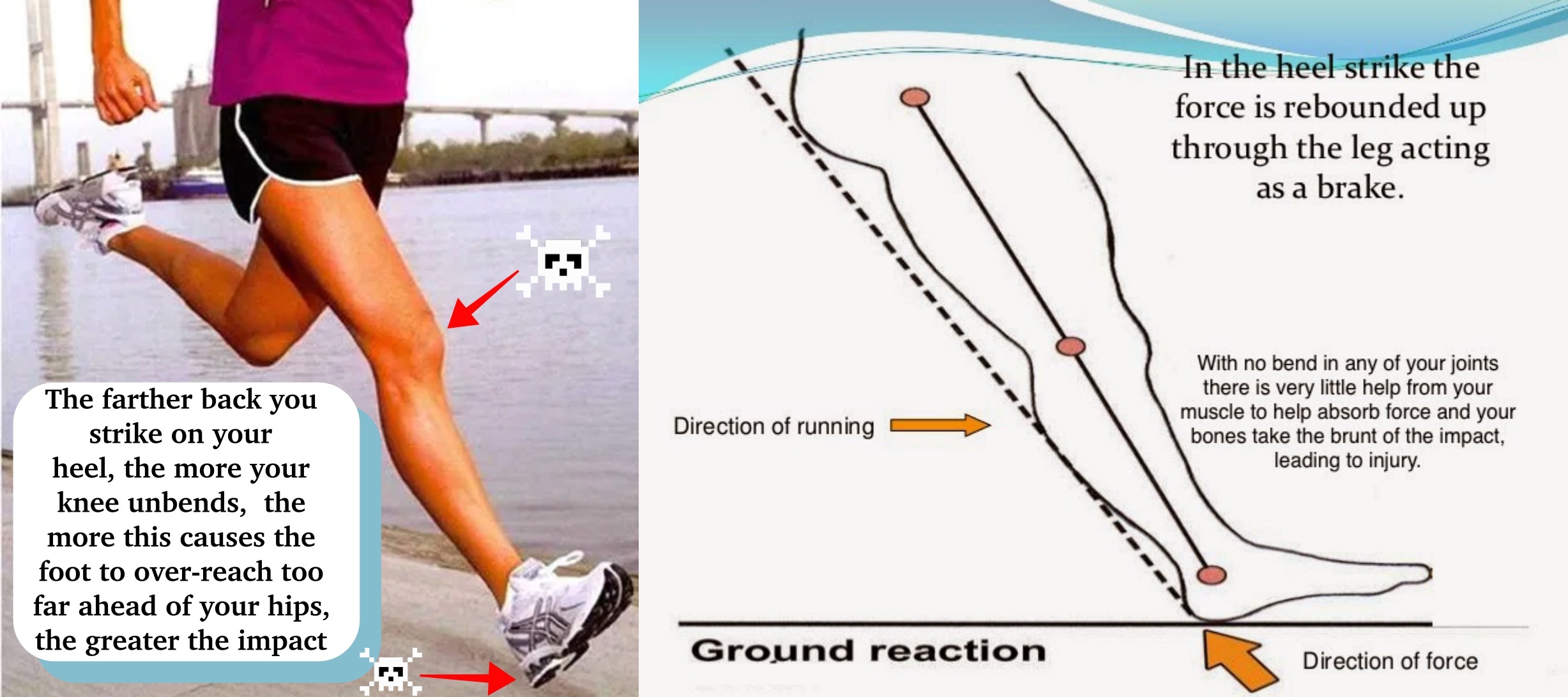
The heavy burst in collisional impact at heel strike is creates when the heel strikes the ground, while the knee is completely unbent and locked-out in a stiff position, which is an unnecessary use of the knee because it cannot help absorb impact when the joint is too stiff and inflexible.
This landing configuration also causes a longer distance separation between initial foot strike position and the center of mass. This causes the braking load to persist longer in duration because the mass of the body abruptly grinds to a halt for too long, giving rise to a distinct compressive force unseen in forefoot running.
- A landmark study in the Journal of Biomechanics underscored that the high impact phase only present at heel strike in heel strike running occurs because the body collides with the ground for an unusually prolonged time, whereby the intensive body/ground collision is the source of repeated impulse loadings that causes injury in runners
Knowing all this, why can’t a heel strike runner wear thick cushioned running shoes to reduce all this impact?
It is more than worth noting that the research now suggests that more cushioning is the wrong idea, and here’s why:
Shoe Cushioning Makes Things Worse
Despite being a multi-billion industry with unlimited research and tech resources behind it, the running shoe industry still cannot adequately reduce the high impact conditions of heel strike running.
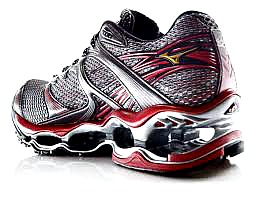
In a conventional running shoe, the heel is mounted on a thick slab of cushioning relative to the shoes toe-box, whereby over-reaching too far ahead of the torso with your foot, causing a force-intensive over-stride angle, is a major consequence of that.
Another equally damaging consequence of running in thick cushioned shoes is the lack of ground-feel leads to big increases in the downward force at heel strike, whereby many examples the research has provided for us reveals cushion properties of standard running shoes failed to produce any detectable improvements in the magnitude of impacts at heel strike.
Therefore, the clinical applications of thick underfoot cushioning doesn’t prove its full worth for improving impact conditions in heel strike runners. Again, this is because the excessive impact that reaches a level of injury can be traced back to mechanical impairments directly caused by the un-ergonomic fit and feel of the conventional running shoe, which is also one of the causes of functional loss in the feet.
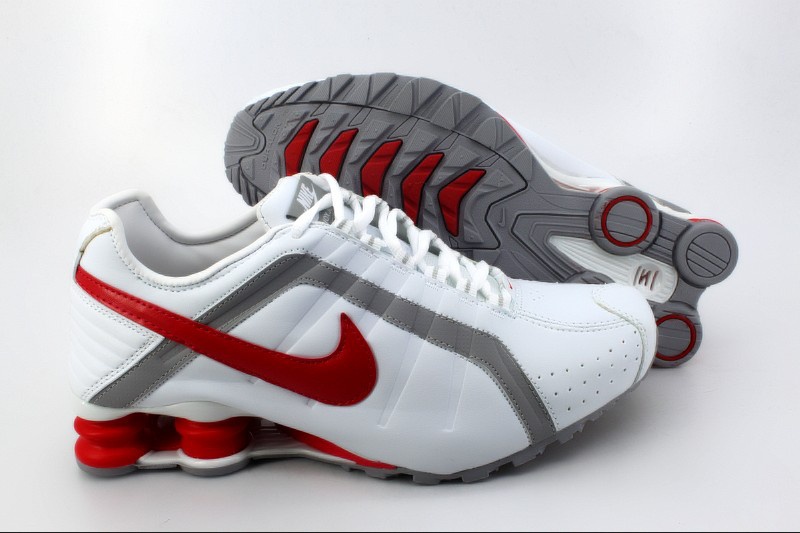

These revealing indicators about heel strike running have caused a great deal of interest in forefoot running, since there’s enough data to say conclusively that its a proven change-maker in preventing over-striding and being more economical. This is because forefoot running results in a contact with the ground thats so brief that many impact variables either never exceed tolerance or aren’t produced at all. This is also why the muscles do not have to use up much energy to absorb impact as the burst in collisional impact is eliminated with a forefoot strike.
In that light, here’s all the evidence-based reasons forefoot running is the most safest and efficient way to run!

References:
[1]. Karin et al. Direct dynamics simulation of the impact phase in heel-toe running. J Biomech, 1995; 28(6):661-668.
[2]. Radin et al. Response of joint to impact loading. J Biomech, 1973;6:51-57.
[3]. Clarke TE., Frederick EC and Cooper LB. The effects of shoe cushioning upon ground reaction forces in running. Int J Sports Med, 1983, 4, 247-251.
[4]. Nigg et al. Methodological aspects of sport shoe and sport surface analysis. In: Biomechanics VIII-B, 1983. pp. 1041-1052. Human Kinetic Publishers, Champaign, IL.
[5]. Nigg, BM. Biomechanical aspects of running. In: Biomechanics of running shoes, 1986a. pp15-19. Human Kinetic Publishers, Champaign, IL.
[6]. Nigg et al. The influence of running velocity and midsole hardness on external impact forces in heel-toe running. J Biomech, 1987; 20: 951-959.
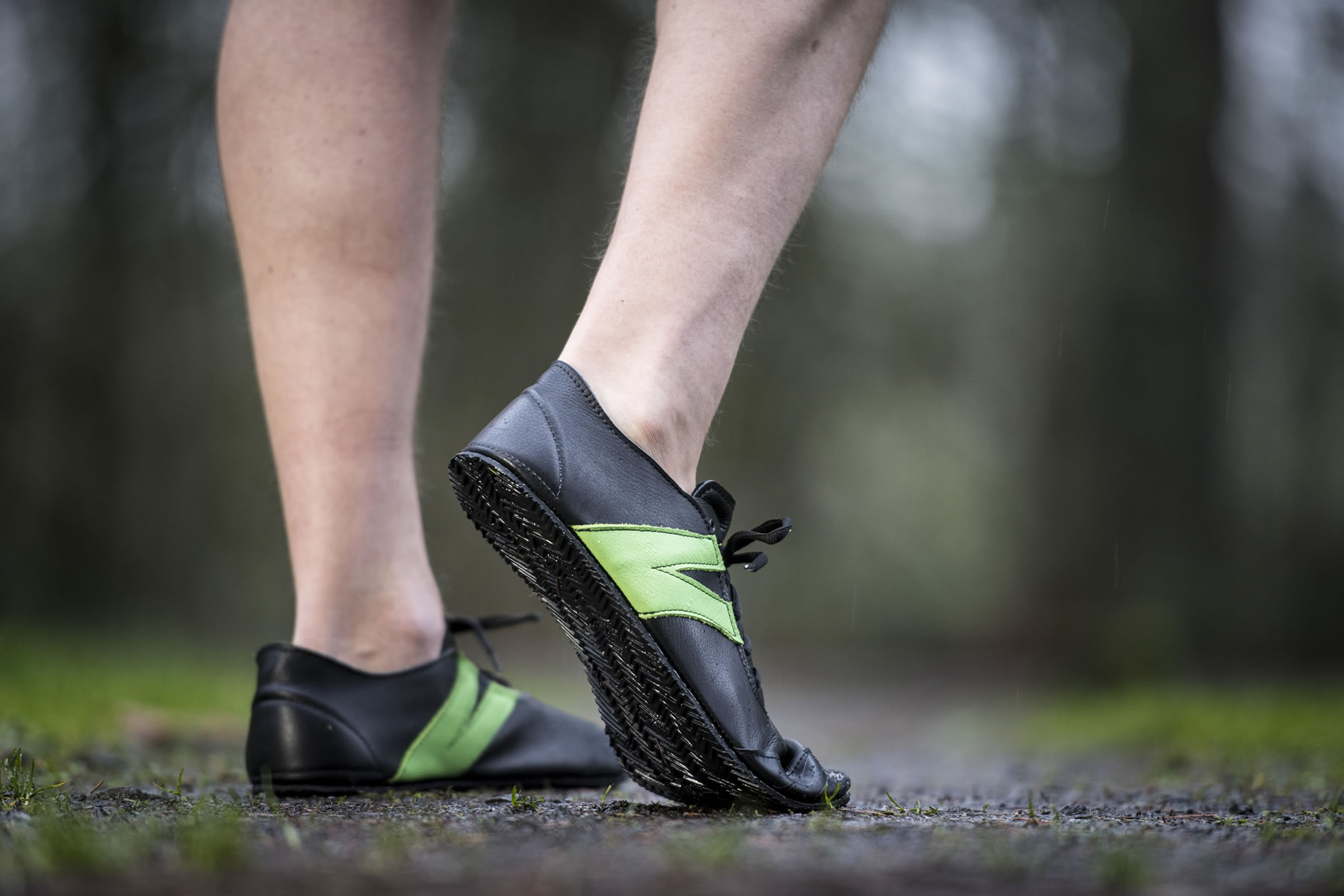
Bretta Riches
BSc Neurobiology; MSc Biomechanics candidate, ultra minimalist runner & founder of RunForefoot. I was a heel striker, always injured. I was inspired by the great Tirunesh Dibaba to try forefoot running. Now, I'm injury free. This is why I launched Run Forefoot, to advocate the health & performance benefits of forefoot running and to raise awareness on the dangers of heel striking, because the world needs to know.
Latest posts by Bretta Riches (see all)
- Cushioned Running Shoes Found to Be Bad for Ankles - 23/04/2024
- Forefoot Running and Achilles Pain - 19/04/2024
- Does Foot Strike Really Matter in Running? YES! - 17/04/2024

